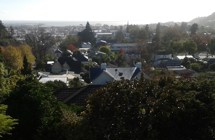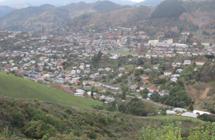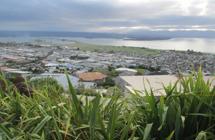The most significant air pollutant in New Zealand are small airborne particles in our air (known as particulate matter). Particulate pollutants are of most concern in New Zealand because of their high concentrations in some of our towns. Exposure to high levels of airborne particle pollutants has the potential to cause respiratory and cardiovascular issues. View a factsheet on why air quality is important here.
PM10 and PM2.5 are the main concern in the Nelson urban area, particularly during the winter period when cold still conditions prevent dispersion and allow the particulate matter to build up. Exposure to PM can have short and long term health effects. The Council reports on annual and daily concentrations each year along with trends for the monitoring sites at St Vincent St (Nelson South) and Blackwood St (Tahunanui).
PM monitoring history at towns in this region
What is this showing me?
| Towns | 10-year Trend | annual average (µg/m³) | Highest daily average (µg/m³) | 2nd highest daily average (µg/m³) | Number of exceedances |
|---|
What is this showing me?
| Towns | 10-year Trend | annual average (µg/m³) | Highest daily average (µg/m³) | 2nd highest daily average (µg/m³) | Number of exceedances |
|---|




